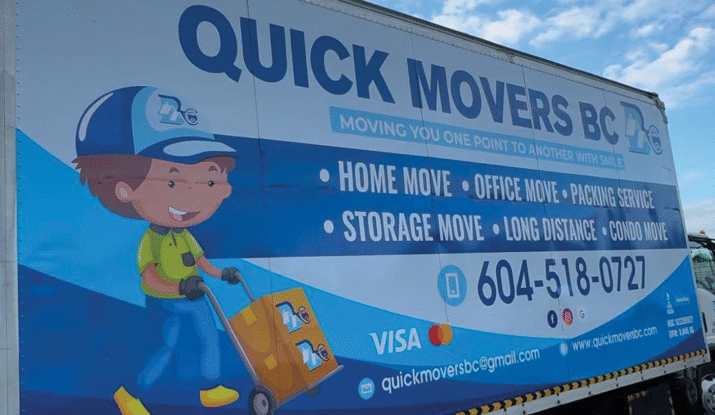Every day, thousands of trucks and trailers glide along highways, wind through urban streets, and park for loading in crowded docks. A few, however, halt conversation and draw lingering glances at stoplights, loading zones, and sidewalks.
The distinction lies in vehicle wraps that reimagine standard commercial fleets as expansive, travelling billboards. Unlike conventional marketing that waits for customers to look for it, wraps deliver your brand directly into the spotlight—whether the audience is idling in rush hour, lining up for lunch downtown, or wandering into the mall.
This approach turns every mile your trucks cover into an advertising opportunity, amplifying brand exposure in a manner that static billboards and print media cannot match. The result is a compelling return on investment, as the same vehicle can engage multiple demographic segments over diverse geographic landscapes.
Why truck wraps outperform static media:
Legacy channels impose inherent constraints. A radio spot lasts seconds before it’s forgotten. A print ad quickly becomes indistinguishable on a crowded page. Digital banners contend with ad-blockers and the human tendency to scroll past distractions.
Vehicle wraps operate on a unique principle, delivering uninterrupted brand visibility that bypasses the skip, mute, and ignore functions available to most media. As a wrapped truck rolls through its normal deliveries and service calls, it accumulates a steady cadence of impressions, all at zero incremental media spend.
Quantitative data underscore the medium’s potency. Contrast this with a spot on a local radio station, where a 30-second slot momentarily enters a listener’s consciousness, or a newspaper advertisement that vies for attention alongside a roster of competing offers on the same page.
Cost efficiency further differentiates truck wraps from other channels. Traditional media—be it radio, broadcast, or online—demands recurrent payments to maintain visibility. A professionally installed wrap, by contrast, represents a one-time expenditure, yielding several years of uninterrupted service. Evaluating the cost on a per-thousand-impression basis, wraps routinely outperform the alternatives.
Savvy firms optimize the inherent power of their delivery and logistics infrastructure by treating every mile traveled as a branding opportunity. By consciously mapping routes, they ensure that every turn, intersection, and highway becomes a new touchpoint for potential customers, quietly amplifying their market presence with each trip.
Urban routes provide concentrated consumer exposure, ideal for businesses whose clientele is strictly local. Conversely, highway routes cultivate expanded, regional brand recognition, well-suited for organizations whose service areas cross multiple municipalities or states. A blended routing strategy merges both advantages, ensuring thorough market penetration.
Envision a plumbing contractor whose logo-decorated vans respond to service requests throughout a metropolitan region. Each repair visit doubles as a promotional moment, allowing the brand to reach adjacent homeowners who may soon require similar attention. The same concept applies for courier fleets, moving and storage firms, food distributors, and any commercial operator that employs marked vehicles.
The fundamental strength of mobile advertising is its capacity to intercept target audiences in the precise environments where they think and make decisions. A crew cab momentarily parked in front of a bistro may catch the eye of a chef comparing bids for a new food supplier; a compact truck rolling homeward may be spotted by a couple weighing the merits of a new kitchen.
Design Features that Achieve Objectives
A high-impact vehicle wrap combines visual drama and functional design, responding to the particular demands of advertising on the move. Unlike a stationary billboard that audiences may approach frontally, a well-executed vehicle wrap must relay essential messages to passing motorists and pedestrians in a fraction of a glance.
Bold, contrasting color schemes guarantee visibility across wide distances and under shifting lighting. Typography must be sized for legibility in adjacent lanes, yet refined enough to sustain a professional image. Company contact details ought to be easily found without dominating the design.
Your wrap must embody the sector and the audience you intend to reach, while also breaking through the field. A landscaping firm might choose earthy tones and natural motifs; a technology firm might prefer clean lines and minimalist visuals. The goal is a design that lingers in memory and communicates your product or service with clarity.
Experienced design teams account for the technical demands of vehicle wrapping, recalibrating graphics for curves, handles, and contours. They gauge viewing angles and distances to guarantee the design project’s maximum readability and effect.
Sectors that gain the most from wrapped trucks or trailers include service-based enterprises. Contractors, landscapers, and maintenance companies, in particular, reap the benefits of local trust fostered by vehicles that radiate professionalism. When your truck is backed into a driveway, nearby homeowners instantly connect your name with dependable workmanship.
Delivery and logistics fleets amplify marketing reach by employing full-vehicle branding. Each package en route becomes a moving billboard. Food-grade carriers present à la carte offerings to restaurant buyers and grocery procurement managers.
Retailers leverage fleet branding to channel foot traffic to brick-and-mortar stores. A bakery truck uniformly clad in images of frosted eclairs and the street address pulls in buyers along the route. Repair shops, specialty clinics, and B2B consultancies enjoy a lift in neighborhood familiarity.
Even brands without a logistics mandate find fleet wraps commercially prudent. Sales representatives arriving at appointments in branded vehicles portray cohesion and enterprise professionalism.
Assessing Effectiveness and Calculating Return
Quantifying vehicle-wrap performance demands a suite of indirect evidence since single-source attribution proves elusive. Forward-thinking firms adopt layered diagnostic systems to evaluate vehicle-branding efficacy.
Dedicated, trackable phone numbers routed through a central switchboard capture inquiries prompted by the wrap. Scannable QR codes funnel scanners to bespoke microsites, generating analytic footprints. Periodic customer questionnaires, probing the attribution of discovery, frequently surface the vehicle wrap as a latent influencer.
Website analytics frequently reveal pronounced surges in organic search traffic tied to your business name and local keywords shortly after vehicle wrap installation. Concurrently, rising social media mentions and user-generated content featuring your fleet underscore elevated brand visibility and engagement.
Firms regularly note heightened recognition during networking encounters and within their neighborhoods soon after adopting wraps. This continual, subconscious name recall translates into referrals and inquiries that, though hard to quantify, clearly arise from the amplified visibility the wraps provide.
The durable nature of vehicle wrap campaigns enhances overall return-on-investment measurement. Although the upfront expense may appear noteworthy, amortizing that outlay over three to five years of round-the-clock exposure yields a remarkably favorable cost-per-impression relative to recurring expenses associated with traditional media.
Leverage Every Mile as a Marketing Asset
Vehicle wraps transcend conventional advertising; they function as ongoing, strategic business assets. With each mile your fleet covers, you simultaneously reach prospective customers, reinforce your brand narrative, and project the image of a reliable, professional firm.
The unparalleled blend of extensive visibility, economical pricing, and prolonged exposure renders truck and trailer wraps a premier advertising tactic for businesses capitalizing on commercial vehicles. From a sole-maintenance van to a coordinated fleet of distribution trucks, expertly crafted wraps can amplify marketing presence substantially while ensuring enduring, uniform brand visibility across years of service.
Eager to convert your transportation assets into potent promotional channels? Investigate local wrap specialists, compile design concepts that embody your brand identity, and strategize how a wrapped fleet can continuously fuel commercial expansion across your target regions.

